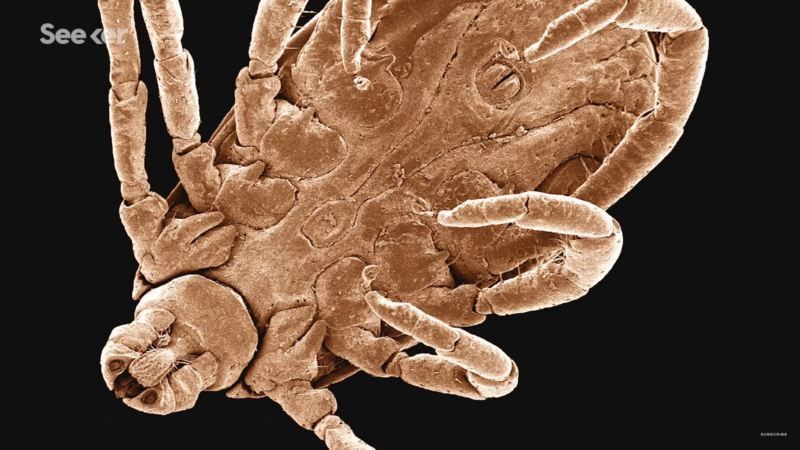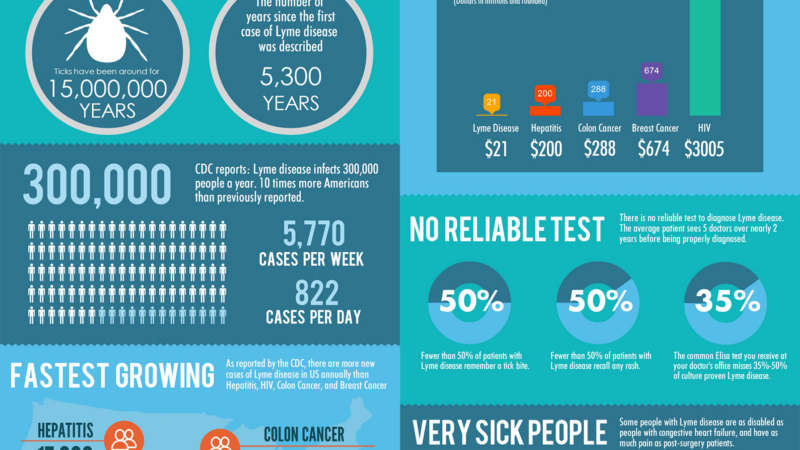Focus on Ticks | October 2024
This month’s publication includes articles, infographics, and featured people centered around ticks and the diseases they vector.
Riley Sims: Colors of Resilience
Riley Sims, a graduate of Ball State University and currently pursuing her graduate studies at Kent State University, combines geometric precision with spontaneous bursts of vibrant color to create a dynamic representation of life’s complexities, healing and resilience.
A key focus of Sims’ art is her intimate exploration of Lyme disease, a condition she has personally battled. However, Sims’ work goes beyond self-expression – her canvases are powerful advocacy tools. Her paintings education viewers about Lyme disease, bringing awareness to the financial and emotional challenges faced by those with the disease.
Dr. Willy Burgdorfer: One Tick at a Time
Dr. Willy Burgdorfer, born on June 27, 1925, in Basel, Switzerland, is known for transforming the understanding of tick-borne illnesses.
Burgdorfer pursued his undergraduate and doctoral studies in parasitology and tropical bacteriology at the University of Basel – where he first developed his fascination with ticks while studying how these arthropods transmitted spirochetes that caused relapsing fever. In 1951, Burgdorfer moved to the United States for a fellowship in Montana at the Rocky Mountain Laboratories (RML) – a National Institute of Health biomedical research facility for vector-borne diseases, such as Rocky Mountain spotted fever, Lyme disease and Q fever.
What Does Lyme Disease Do to Your Body?
What exactly is the connection between a tick bite and lyme disease?
While we’re not sure exactly where and when the disease originated, we do know a lot about how it works, its signs, its symptoms in humans and dogs, how it’s spread and its treatment.
Check out this video by Seeker to learn all about what lyme disease does to your body.
Tick-ing Time Bomb: The Expanding Threat of Tick-Borne Diseases
Urbanization, resistance to pesticides, and, most critically, climate change are creating ideal conditions for global tick proliferation. As these 8-legged bloodsuckers expand their territories, the world should expect a corresponding rise in Lyme disease, spotted fever, Crimean-Congo hemorrhagic fever, tick-borne encephalitis, and other conditions that infect humans, pets, and livestock.
“This is an epidemic in slow motion,” a Centers for Disease Control (CDC) tick expert and research, biologist told the Associated Press.
Ticks live on every continent except Antarctica, and while estimates of annual tick populations vary, the scientific community agrees that their numbers are growing. Researchers also are unanimous that arachnids pose an increasing health risk as mild winters and longer summers associated with global warming kill off fewer individuals, give them longer to develop and feed, and make higher elevations and northerly latitudes that previously were too intemperate or elevated more hospitable.
Lyme Disease Quick Facts
Lyme disease is one of the fastest growing infectious diseases in the country and one of the most difficult to diagnose. Experts in the medical and scientific community, as well as key legislators, have deemed Lyme disease an epidemic … a national public health crisis … and a growing threat.
300,000 people are infected with Lyme disease each yearAt least 300,000 people are infected with Lyme disease each year
New tick-borne diseases are emerging … the number of tick endemic regions is growing … the tick population is increasing … and, the number of people infected with Lyme disease is steadily rising.
The Centers for Disease Control and Prevention (CDC) report that at least 300,000 people are infected with Lyme disease each year in the United States. That’s 25,000 new cases per month. Twenty-five percent of those patients are children, ages 5 to 14.
Information and Infographic obtained from https://danielcameronmd.com/.




